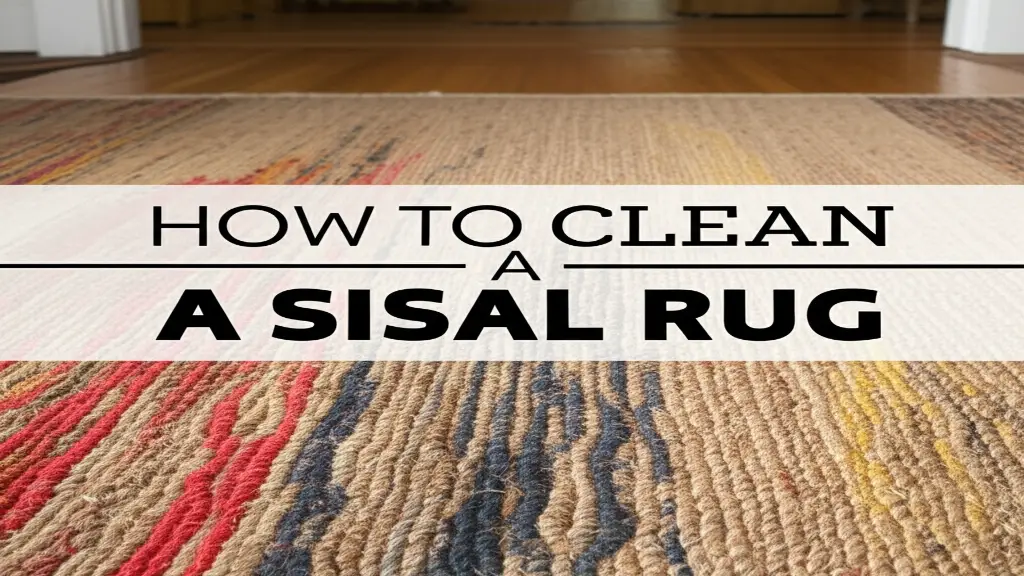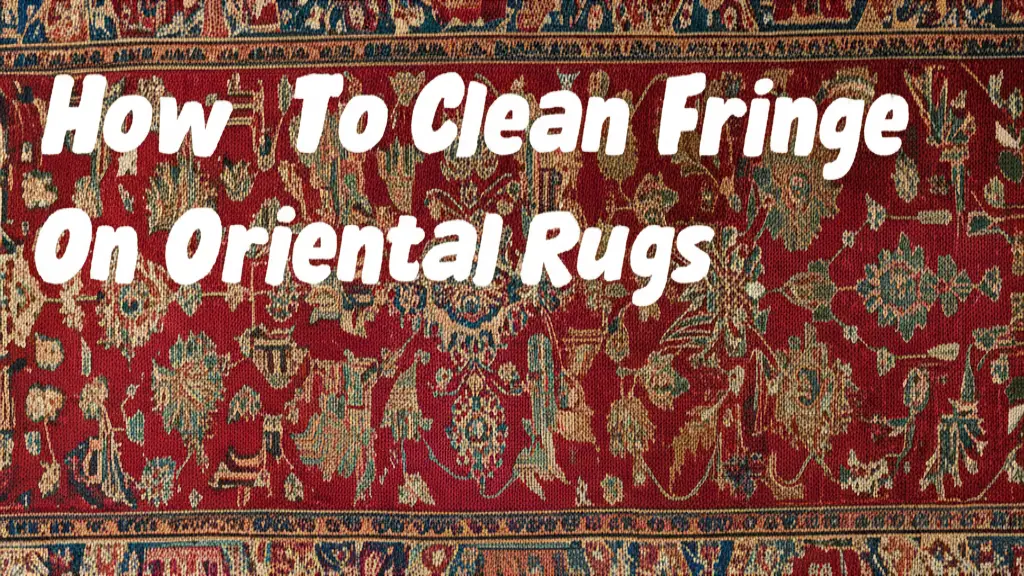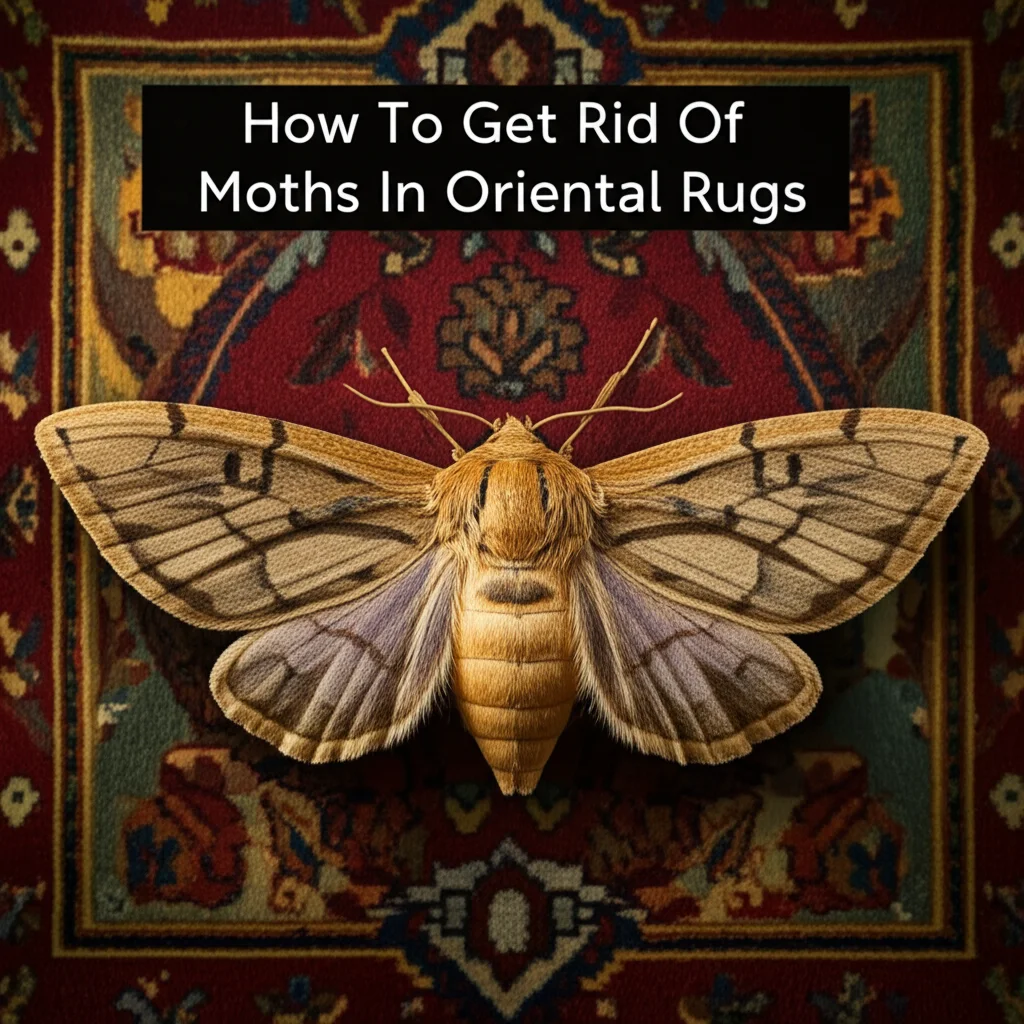· Todd Martin · Rug Cleaning · 15 min read
How To Clean A Sisal Rug

How to Clean a Sisal Rug: The Ultimate Guide for Natural Fiber Care
Sisal rugs add natural warmth and texture to any space with their earthy appeal and durability. However, cleaning these natural fiber rugs requires special attention and techniques to maintain their beauty and extend their lifespan.
Whether you’re dealing with everyday dirt, pet stains, or accidental spills, knowing how to clean a sisal rug properly can save you from costly replacements.
In this comprehensive guide, we’ll walk through effective methods for routine maintenance and tackle those stubborn stains that might otherwise ruin your beautiful sisal floor covering.
Takeaway Points:
- Vacuum sisal rugs regularly using suction-only mode
- Treat spills immediately by blotting (never rubbing)
- Use dry cleaning methods whenever possible
- Test any cleaning solution on an inconspicuous area first
- Consider professional cleaning for stubborn stains
Quick Answer: To clean a sisal rug, vacuum regularly using suction only (no beater bar), immediately blot spills with a clean cloth, use dry cleaning methods like baking soda for odors, and avoid excessive moisture which can damage sisal fibers. For deeper cleaning, consider professional services that specialize in natural fiber rugs.
Understanding Sisal Rugs: What Makes Them Special and Challenging
Sisal rugs are crafted from natural fibers derived from the leaves of the Agave sisalana plant, primarily grown in Brazil, Tanzania, and Mexico. These rugs have become increasingly popular due to their eco-friendly composition, durability, and distinctive texture that adds character to any room.
However, the same properties that make sisal rugs desirable also create unique cleaning challenges. The natural fibers are highly absorbent and can be sensitive to moisture, which means traditional water-based cleaning methods often do more harm than good. Understanding the specific characteristics of sisal is crucial before attempting any cleaning:
- Highly absorbent: Sisal quickly soaks up liquids, making spills particularly problematic
- Texture: The textured surface traps dirt and debris more readily than smooth rugs
- Natural color variations: Cleaning solutions may affect the color differently across the rug
- Prone to browning: Excessive moisture can cause brown water marks and fiber distortion
Before investing in a sisal rug, it’s important to recognize that they’re better suited for low-traffic, low-spill areas. For homes with young children or pets prone to accidents, consider placing sisal rugs in formal living spaces rather than high-traffic areas like entryways or dining rooms.
Essential Routine Maintenance for Sisal Rugs
The best way to keep your sisal rug looking fresh is through consistent preventative care. Regular maintenance not only keeps your rug looking its best but also significantly extends its lifespan by preventing dirt buildup that can damage fibers over time.
Regular Vacuuming Techniques
Vacuuming is the cornerstone of sisal rug maintenance, but it must be done correctly to avoid damage:
- Use suction-only settings: Always disable the beater bar or rotating brush when vacuuming sisal as these can catch and damage the natural fibers.
- Vacuum frequency: High-traffic areas should be vacuumed 2-3 times weekly, while less-used areas can be maintained with once-weekly vacuuming.
- Vacuum both sides: When possible, flip the rug over and vacuum the underside to remove embedded dirt that works its way through the weave.
- Direction matters: Vacuum with the grain of the fibers first, then against the grain for thorough cleaning.
Preventative Measures Worth Taking
Beyond regular vacuuming, these preventative steps can help maintain your sisal rug:
- Rotate quarterly: Rotating your rug every 3-4 months ensures even wear, especially in areas exposed to sunlight or heavy foot traffic.
- Use rug pads: A quality rug pad prevents slipping and provides cushioning that helps protect sisal fibers from crushing.
- Implement a no-shoes policy: Removing shoes before walking on sisal rugs reduces dirt and potential damage from sharp heels.
- Add entryway mats: Placing mats at entrances traps dirt before it reaches your sisal rug.
- Consider applying a protectant: Some specialty retailers offer fiber protectors specifically formulated for natural materials like sisal.
Remember that sisal, like all natural fiber rugs, will show some wear over time—this is part of their organic appeal and character. Consistent maintenance helps ensure this aging process happens gracefully rather than prematurely.
How to Clean Sisal Rug Pet Stains Effectively
Pet owners know that accidents happen, even with the best-trained animals. Addressing pet stains on sisal rugs requires quick action and the right approach to prevent permanent damage.
Immediate Action Steps for Fresh Pet Accidents
When a pet accident occurs on your sisal rug:
- Blot immediately: Use paper towels or clean white cloths to blot up as much liquid as possible. Press down firmly without rubbing, which can push the stain deeper into fibers.
- Apply dry absorbents: Cover the area with baking soda, cornstarch, or commercial absorbent powder to draw out remaining moisture. Let it sit for several hours or overnight if possible.
- Vacuum thoroughly: Once completely dry, vacuum up all the absorbent material.
Treating Stubborn Pet Odors and Stains
For set-in pet stains or lingering odors on sisal rugs:
- Dry enzymatic cleaners: Look for enzyme-based powders specifically formulated for natural fibers. These break down proteins in pet waste without excessive moisture.
- Vinegar solution for odors: For persistent odors, mix equal parts white vinegar and water in a spray bottle. Lightly mist (don’t soak) the area, then immediately use a fan to speed drying.
- Professional cleaning: For severe pet stains, consult professionals who specialize in natural fiber rugs. They have specialized equipment for deep cleaning without causing damage.
It’s worth noting that significant pet accidents may permanently alter sisal’s color or texture despite your best efforts. This is particularly true for urine stains, which contain chemicals that can react with natural fibers. For households with pets prone to accidents, consider how to clean a polypropylene rug instead, as synthetic alternatives offer better stain resistance.
Best Sisal Rug Cleaner Options for Different Situations
Selecting the right cleaning products for sisal rugs is essential for effective maintenance without causing damage. Here’s a breakdown of the best cleaning solutions for various situations:
Commercial Products Specifically for Natural Fibers
Several manufacturers produce cleaners specifically formulated for natural fiber rugs:
- Host Dry Carpet Cleaner: A moisture-controlled system specifically designed for natural fibers
- Sisal Life: A specialized cleaner that cleans without excessive moisture
- Capture Carpet & Rug Dry Cleaner: A powder cleaner that works well on organic fibers
When selecting commercial products, always look for those explicitly stating they’re safe for sisal or natural fiber rugs. Avoid products containing bleach, which can discolor sisal, or harsh chemicals that may break down the fibers.
DIY Cleaning Solutions for Sisal Rugs
For those preferring homemade options, these DIY solutions can be effective when used sparingly:
- Club soda: For fresh spills, blotting with plain club soda can help lift the stain without leaving residue
- Mild soap solution: Mix a few drops of mild dish soap with warm water and use only the foam (not the liquid) for spot cleaning
- White vinegar solution: Equal parts white vinegar and water in a spray bottle works for odor neutralization
- Baking soda paste: For grease stains, a paste of baking soda and water (mostly dry, not wet) can help absorb oils
Testing Before Treating
With any cleaning solution, whether commercial or DIY:
- Always test in an inconspicuous area first (under furniture or in a corner)
- Wait 24 hours to ensure no discoloration or damage occurs
- Proceed with gentle application only if the test area shows no adverse effects
Remember that less is more when it comes to moisture on sisal. Even with “safe” cleaners, use minimal amounts and ensure thorough drying to prevent water damage or mildew growth beneath the surface.
How to Clean a Sisal Rug with Baking Soda
Baking soda is perhaps the most versatile and sisal-friendly cleaning agent in your pantry. This natural powder cleaner effectively removes odors, absorbs spills, and can even tackle light staining without the risks associated with wet cleaning methods.
Deep Cleaning with Baking Soda
For routine deep cleaning or deodorizing your sisal rug:
- Vacuum thoroughly: Remove surface dirt and debris before applying baking soda
- Apply generously: Sprinkle a liberal amount of baking soda across the entire rug surface
- Work it in gently: Using a soft brush, gently work the powder into the fibers without abrading them
- Let it sit: Allow the baking soda to remain on the rug for at least 6-8 hours or overnight for maximum effectiveness
- Vacuum completely: Use a strong suction vacuum to remove all baking soda residue
This process is especially effective for neutralizing ambient odors that sisal tends to absorb, such as cooking smells or mustiness in humid environments.
Spot Treatment with Baking Soda
For localized stains or spills:
- Blot first: Remove as much of the spill as possible by blotting with clean cloths
- Apply baking soda: Cover the stain completely with a thick layer of baking soda
- Create a dry paste: For stubborn spots, spray the baking soda very lightly with water to create a mostly-dry paste
- Allow to dry completely: Let the area dry thoroughly (typically 8-12 hours)
- Brush and vacuum: Gently brush the dried powder and vacuum thoroughly
This method is particularly effective for absorbing greasy residues or light food spills before they set into the fibers. The key advantage of baking soda is that it can help draw out contaminants while adding minimal moisture to the sisal fibers.
For especially delicate sisal or antique rugs, you might want to learn how to clean fringe on oriental rugs for techniques that can be adapted to sisal borders and edges.
Professional Sisal Carpet Cleaning: When to Call the Experts
While regular maintenance and spot cleaning can address many sisal rug issues, certain situations call for professional intervention. Knowing when to DIY and when to call in experts can save your rug from permanent damage.
Signs Your Sisal Rug Needs Professional Attention
Consider professional cleaning when:
- Large areas are stained or soiled beyond what spot cleaning can address
- Water damage has occurred, causing browning or fiber distortion
- Mold or mildew is suspected (often indicated by musty odors)
- The rug has not been professionally cleaned in 2-3 years despite regular use
- Allergies are a concern, and deep cleaning is needed to remove allergens
What to Expect from Professional Sisal Cleaning
Professional cleaners who specialize in natural fiber rugs typically:
- Initial assessment: Evaluate the rug’s condition, fiber type, and identify problem areas
- Dry soil removal: Use specialized equipment to remove embedded dry particles
- Controlled cleaning: Apply appropriate dry or low-moisture cleaning methods specific to sisal
- Spot treatment: Address individual stains with specialized products
- Finishing: Often includes brushing to restore texture and application of fiber protectants
Finding the Right Professional Cleaner
Not all carpet cleaning services are qualified to handle sisal rugs. When selecting a professional:
- Look specifically for companies that mention experience with natural fiber or sisal rugs
- Ask about their cleaning process and ensure they don’t use standard wet extraction methods
- Request references or examples of previously cleaned sisal rugs
- Confirm they’re properly insured in case of damage
- Inquire about guarantees or warranties on their work
Professional cleaning typically costs between $2-$5 per square foot for sisal rugs, with higher rates for severely soiled rugs or those requiring special treatments. While this represents a significant investment, professional cleaning can extend your rug’s lifespan considerably when done correctly.
After professional cleaning, consider learning how to anchor a rug on carpet to ensure your freshly cleaned sisal stays properly positioned without slipping or buckling.
How to Clean a Sisal Rug with Vinegar: Safe Methods
White vinegar can be an effective cleaning agent for sisal rugs when used correctly. Its natural acidity helps neutralize odors and break down some types of stains without harsh chemicals. However, because moisture is sisal’s enemy, vinegar must be used carefully.
Creating a Safe Vinegar Cleaning Solution
For treating odors and light stains on sisal rugs:
- Mix properly: Combine equal parts white vinegar and water in a spray bottle
- Reduce moisture: Some experts recommend adding the mixture to a pump foamer to further control moisture
- Test first: Always test on an inconspicuous area and allow to dry completely before proceeding
Application Techniques to Prevent Damage
When using vinegar solution on sisal:
- Never saturate: Lightly mist rather than wet the fibers
- Blot immediately: After misting, immediately blot with clean, dry cloths
- Enhance drying: Use fans and open windows to ensure quick, thorough drying
- Address residual odor: The vinegar smell will dissipate as it dries, but you can speed this process with good ventilation
Vinegar for Specific Sisal Issues
- Water marks: A very light vinegar mist can sometimes help blend water stains by creating a more uniform look as it dries
- Mildew prevention: Vinegar’s antimicrobial properties can help prevent mildew when used as a light treatment in humid conditions
- Food spills: The acidity helps break down some food residues before they set in the fibers
While vinegar is natural and generally safe, its acidity means it’s not appropriate for all sisal varieties. Some dyed or treated sisal rugs may react poorly to vinegar. If you’re uncertain about using vinegar on your particular rug, consider safer alternatives like how to clean a jute rug since jute and sisal require similar handling.
Addressing Water Damage and Spills on Sisal Rugs
Water is perhaps the greatest enemy of sisal rugs. When liquid penetrates these highly absorbent fibers, it can cause browning, fiber distortion, mildew, and even structural damage to the rug’s backing. Understanding how to handle water-related incidents is critical for sisal rug owners.
Emergency Response for Wet Sisal Rugs
When substantial liquid contacts your sisal rug:
- Act immediately: Every minute counts with water exposure
- Blot aggressively: Use clean, dry towels and apply pressure to absorb as much liquid as possible
- Continue blotting: Change towels frequently and continue until no more moisture transfers to the towels
- Elevate if possible: For significant spills, elevate the rug to allow airflow underneath
- Increase air circulation: Use fans directed at both the top and bottom (if possible) of the rug
- Dehumidify: In humid environments, use a dehumidifier to remove moisture from the air
For large-scale water exposure (such as flooding or plumbing leaks), professional help should be sought immediately, as these incidents often require specialized equipment for proper drying.
Preventing and Treating Water Stains
Water stains appear as brownish rings or discoloration where liquid has been absorbed and then dried in sisal fibers. To prevent and address water stains:
Prevention:
- Use coasters under drinks and plant saucers under potted plants
- Apply fabric guard products specifically formulated for natural fibers
- Place sisal rugs away from areas prone to spills or moisture
Treatment for existing water stains:
- Dry brush: Sometimes gentle brushing with a soft brush can help blend the edges of water stains
- Dilute hydrogen peroxide: For stubborn water stains, some professionals use very dilute hydrogen peroxide (3%) applied minimally to the affected area only
- Professional cleaning: For valuable rugs or significant staining, consult specialists
It’s important to note that once water damage occurs in sisal, complete restoration to the original appearance may not be possible. The natural reaction of plant fibers to water can cause permanent changes to the fiber structure and color.
For spaces where water exposure is likely, such as sunrooms or areas near entrances, consider how to clean a seagrass rug pet stains as seagrass can sometimes offer slightly better moisture resistance while providing a similar natural look to sisal.
Frequently Asked Questions About Sisal Rug Care
Is there any way to clean a sisal rug?
Yes, sisal rugs can be cleaned, but they require special techniques focusing on dry or low-moisture methods. Regular vacuuming with a suction-only setting is essential for routine maintenance. For deeper cleaning, use dry cleaning compounds specifically formulated for natural fibers, baking soda treatments, or consult professionals who specialize in natural fiber rug cleaning.
Can a sisal rug get wet?
Sisal rugs should avoid moisture whenever possible. While brief exposure to small amounts of liquid can be managed with immediate blotting, significant wetness can cause permanent damage including browning, fiber distortion, mildew growth, and backing deterioration. If substantial wetting occurs, professional intervention is recommended.
How to get water stains out of a sisal rug?
Water stains on sisal are challenging to remove completely. For minor water marks, try dry brushing to blend the edges or a very light application of hydrogen peroxide (3%) to the affected area only. For valuable rugs or significant staining, professional cleaning services that specialize in natural fibers offer the best chance of improvement.
Can you put baking soda on a sisal rug?
Baking soda is one of the safest and most effective cleaning agents for sisal rugs. It can be used generously to absorb odors and treat light stains. Apply it liberally, work it gently into the fibers with a soft brush, allow it to sit for several hours or overnight, then vacuum thoroughly to remove all residue.
How often should sisal rugs be professionally cleaned?
Sisal rugs in average household conditions benefit from professional cleaning every 18-24 months. High-traffic areas or homes with children and pets may require professional cleaning annually. Between professional cleanings, regular vacuuming and prompt attention to spills will help maintain the rug’s appearance and integrity.
Are steam cleaners safe for sisal rugs?
No, steam cleaners should never be used on sisal rugs. The combination of heat and moisture from steam cleaning can cause severe fiber distortion, shrinkage, and backing damage. Only dry cleaning methods or specialized low-moisture techniques by experienced professionals are appropriate for sisal.
How long do sisal rugs typically last?
With proper care and maintenance, quality sisal rugs can last 7-10 years in moderate-traffic areas. Factors affecting longevity include foot traffic levels, exposure to sunlight, cleaning practices, and whether pets are present. Regular rotation and proper cleaning can significantly extend a sisal rug’s lifespan.
Final Thoughts on Sisal Rug Maintenance
Sisal rugs bring natural beauty and texture to your home, but they do require specialized care to maintain their appearance and extend their lifespan. By understanding the unique properties of sisal fibers and following appropriate cleaning methods, you can enjoy these stunning natural floor coverings for many years.
Remember that prevention is always easier than remediation when it comes to sisal rug care. Implementing a regular maintenance routine, acting quickly when spills occur, and knowing when to call professionals are all key components of successful sisal rug ownership.
For those who appreciate the beauty of natural fiber rugs but find sisal maintenance too demanding, consider exploring alternatives like how to clean a jute rug or how to clean a seagrass rug pet stains for options that might better suit your lifestyle while still providing natural texture and warmth to your space.
With the right knowledge and care techniques, your sisal rug can remain a beautiful, sustainable, and distinctive feature in your home for years to come.





